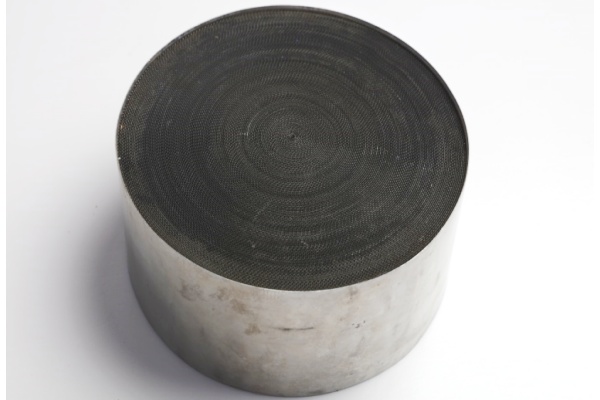To be a valuable global supplier
for metallic honeycombs and turbine parts
Release time:2025-09-24
If you open up a catalytic converter from most modern cars, chances are you’ll see a round metal substrate sitting inside. It’s not there by accident—the round design just works better for exhaust systems. Since the exhaust pipe is round, matching it with a round substrate keeps the gas flowing smoothly instead of creating weird corners where pressure builds up. Less backpressure means the engine breathes easier.

The other reason the round metal substrate is so widely used is the coating process. When the catalyst layer is applied, the round honeycomb structure takes it very evenly. That even spread means more surface area is active, and the reactions that clean up carbon monoxide, hydrocarbons, and nitrogen oxides happen more efficiently. You’re basically getting the most out of every bit of coating material.
From a durability standpoint, round metal substrates are tough. They deal with heat cycles—hot when the car is running, cooling when it stops—without cracking. That’s something ceramic parts struggle with, especially in city driving where the temperature keeps swinging. The metal base expands and contracts without falling apart, so the converter lasts longer.
There’s also the flow side of it. With a round metal substrate, gases move evenly through the honeycomb. You don’t get dead zones where exhaust might slip through untreated. That consistency is what keeps converters meeting emissions rules even after years of hard use.
So when you think about a round metal substrate , it’s not just about shape. It’s about efficiency, reliability, and making sure the catalyst does its job day in and day out without holding the engine back.